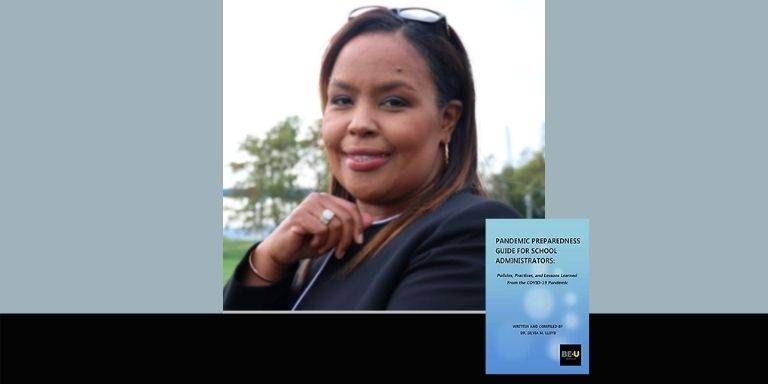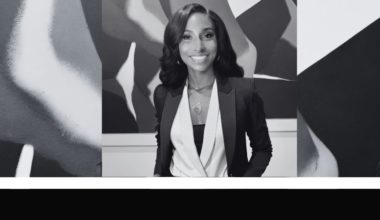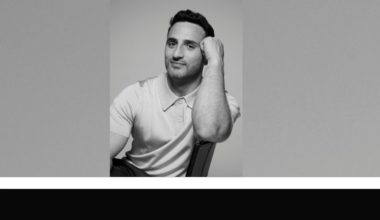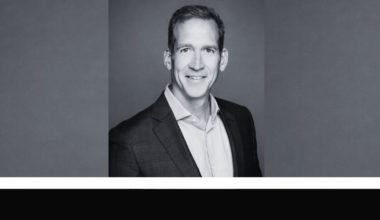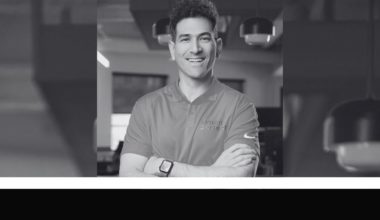Dr. Silvia M. Lloyd began her career as an elementary school librarian in 2001. Within five years, she was promoted to the supervisor of libraries for the Buffalo Public Schools where she also served as the executive officer of the Buffalo School Library Council for the New York State Library. In her role as a K-12 district administrator, Dr. Lloyd led several cross-functional initiatives which included providing professional development for classroom teachers on Culturally Responsive Teaching and Learning (CRTL) and incorporating Reading First early literacy protocols across multiple disciplinary areas. She was awarded the Laura Bush Improving Literacy Through School Libraries grant, which she used to redesign small, outdated school libraries into technologically advanced, state-of-the-art learning facilities in the Buffalo Public Schools and the Rochester City School District. Under Dr. Lloyd’s leadership, reading scores increased by 35 percent.
In 2020, Dr. Lloyd published an eBook entitled, Pandemic Preparedness Guide for School administrators: Policies, Practices, and Lessons Learned from the COVID-19 Pandemic. School districts from around the world, including Japan and the UK, have purchased the guide.
The demand for the pandemic guide led to the creation of Edusite Scholars, an educational consulting firm whose mission is to provide COVID-19 crisis management services, educator branding, and media engagement to leading scholars in the field of education.
Today, Dr. Lloyd serves her community through local and national educational organizations such as Black Edufluencers-United (BE-U), the Association of Black Educators of New York (ABENY, Inc.), and the National Alliance of Black School Educators (NABSE).
Just as we were able to look back at how the Spanish flu pandemic was handled one hundred years ago, it is possible that future generations may need to look back at how we handled the coronavirus pandemic in 2020. In order to do so, they should be able to just pick up a guidebook and follow the plan. It would be great if someone could build upon the plan and improve it so that we are being proactive as opposed to reactive should the world ever find itself in this predicament again. With the right plan we can save the lives of children and safely reopen schools.
We’ve seen the clear connection between the worldview of leaders and planning to contain the virus, or the lack thereof. We saw how one leader’s beliefs and values could set the tone for the attitudes, opinions, and behavior of multiple others. During the coronavirus pandemic, each state operated differently because each governor handled the pandemic differently. Some governors did not feel it was necessary to have a verbal or written plan to communicate with its citizens, they simply told their citizens that the virus would go away. While others used very precise language to carefully articulate a verbal plan and they posted very detailed written plans on their websites, in reports, on social media pages, through robocalls, and text message blasts. Even my daughter, who attends college in Ohio, mentioned this to me.
During the Spring break, we waited and waited for the Governor of Ohio to release his plan for reopening schools. We also waited for the president of her university to share a plan as well. Well, the plans never came. Students were told to return to school for the Fall semester, but my 20-year-old daughter decided on her own not to return to Ohio and ended up taking the year off. She said, “mom, Ohio doesn’t even have a plan. I checked their website and found nothing. I wish I had gone to school in New York.” She may not have realized that what she was expressing was trust in the governor of New York, his leadership, his explicit policies, his practices, his team of experts showcased on television daily.
Despite starting out with the highest rate of COVID-19 infections at the start of the pandemic, New York had emerged as a leader in pandemic responsiveness, because of great leadership that gave us comfort and hope. Not only my daughter but also the world got to see what great leadership looks like and the powerful effect it could have on society socially and emotionally.
I hope that everyone who reads the pandemic preparedness guide emerges as a leader in their field.
What were the top three mistakes you made publishing your book; what did you learn from it?
I wrote the book based upon the Centers for Disease Control (CDC) and the New York State department of health guidelines. It wasn’t until after I had published the book that I noticed that the schools in New York City published a different set of rules. In hindsight, I had to create a New York City guide that I will have to add as an addendum during the next update.
My advice to authors would be to make sure you cover all of your bases prior to uploading your eBook on Amazon because changes cannot be made once it is published. If you’re doing research for a non-fiction book, don’t make any assumptions. Being thorough in doing your research at the start of your journey, could save you some extra steps in the end.
What must happen for you to consider your book a success? and when do you predict it will happen?
The pandemic caught everyone off guard. We were flying the plane as we were building it. Now what we’re seeing is tremendous loss especially for children of color. For the book to be a success would mean that that tremendous loss has ended. If strategies from the book were implemented correctly, the significant loss of learning that kids are facing would cease. The adjustments would be made, and the learning would resume. Taking the strategies from the book, applying them correctly, and allowing the kids to flourish; to me, that is success.
If you find what you’re passionate about it will be a breeze. New authors should take note of what their hobbies and interests are. That could be a good place to start when looking for a topic to write about. Sometimes it could be below the threshold of consciousness and you may have to look around your surroundings to take inventory of what you’re “collecting;” or perhaps what you prioritize in your spending habits. If that doesn’t work, try asking a trusted friend what they enjoy talking most to you about or what topics seem to dominate your conversations. That may reveal a special interest. Once that is determined, begin writing immediately, don’t delay. Someone once asked, “how do you know if you’re a writer?” The answer given was “writers write.” So start writing in a journal. Some journal entries could be your daily thoughts, interesting people, or characters you encountered in school, work, or in your community. Be very descriptive when writing about characters, such as what makes them unique. If they were funny, what made them funny, was it their appearance, the colors they wore, the way they pronounced certain words. It’s all about being observant and noticing the things around you and recording it. Sometimes the best thoughts come in the middle of the night or while you’re doing mundane things such as driving or taking a shower. You have to stop what you’re doing, pull over and write down the thought immediately because once it leaves your mind it’s gone forever. So, I would say keep a notebook handy everywhere you go or use Google docs on your cell phone to capture good thoughts when they come.
My special interest stemmed from my profession. I spent my whole career working in education, so naturally, I’m interested in what happens in schools. Every time schools were mentioned on the news and on the governor’s daily coronavirus press briefings, my ears perked up. I didn’t even realize that I was keeping copious notes. One day I looked up and noticed that I had a coronavirus file sitting on my coffee table. Every time the news came on, I took notes and added to that file. Little by little, more information began to trickle out. A very significant government report was published in April, followed by an educational report in June. The file grew. Then, a survey of parents was published that reported on their experiences with distance learning. It was the perfect addition to my research. Everything seemed to just fall into place once. It was like putting a puzzle together.
Whether you’re writing fiction or non-fiction, be as observant as possible and as descriptive as possible, take notes and create a file to store your notes; and finally, capture inspiration whenever it comes.
What is the one thing you wished you knew before publishing your first book?
I used to believe that publishing a book was next to impossible or that it would take too much time. But what I learned is that it is not as arduous a process as I thought it would be.
Before publishing my first book I enjoyed researching, questioning, and thinking. I wish I would have published sooner because I realized from working in the educational system, being a researcher, and a school librarian, that it fell in line with my background. Because of this, I was able to make a real-world-application with the data I had collected, and I was able to contextualize it in a way that drew meaning for practical use.
One very important way I’ve marketed the pandemic guide is online through social media groups. I created accounts on Instagram, Facebook, YouTube, LinkedIn, Snapchat, and Amazon. Then, I narrowed that down to groups on each app where educators, parents, community members, public health officials, and decision makers would be located.
A marketing technique that I read about and would like to implement is borrowing someone else’s large audience to gain exposure. For example, collaborating with someone who has a large following on their social media account and getting placed on their page or on their Live broadcast. Some people on Twitter do this quite well. They charge authors a fee for weekly or monthly tweets. I have not purchased these services as of yet, but it is something that I am considering doing in the future.
1. BOOK: The Craft of Research by Wayne C. Booth, Gregory G. Colomb, and Joseph M. Williams
For non-fiction writers, I would suggest, The Craft of Research. It’s very important to be as accurate as possible when writing non-fiction. It is a little bit more laborious than fiction in some ways because with fiction you can use your imagination and be inventive. However, with non-fiction, you cannot publish anything that is untrue or neglect to cite a source. So, this book is very helpful with suggesting ways to be as accurate as possible when writing non-fiction, reports, and research papers.
2. YOUTUBE VIDEO: How to Self-Publish A Book on Amazon
This video shows how to set up a Kindle Direct Publishing account on Amazon. It also gives really good tips on how to catalog your book on Amazon as well as how to keep it on top of sales lists.
3. WEBSITE: Fiverr
If you’re not tech-savvy, you could hire a freelancer at a very low cost. There are freelance graphic and design artists, digital marketers, editors, and musicians who can be helpful in developing and publishing books as well as designing book covers and creating brands.
If you only had $100 dollars to write, publish then promote a new book, knowing everything you know now, how would you spend it?
I would probably spend most of the money on promotions because writing and publishing can be done at fairly low costs as long as you have a computer and Internet service. However, having a book publicist get the word out about the book is a great investment because they can write press releases to send to newspapers, magazines, and special interest
Newsletters. They can also set up live and virtual events with bookstores, libraries, book clubs, and book expos. Also, I would hire a photographer for a photoshoot in order to have multiple headshots available and to show up at events to capture you in action talking about your book. Hiring someone to help create your brands such as a graphic artist and a website developer could also increase sales exponentially but could be a little pricey, more than $100.
How can we get in touch with you?
- LinkedIn – Dr. Silvia Lloyd
- Twitter – @DrSilviaLloyd1
- Facebook – @Dr_silvia_lloyd
- Instagram – @Dr_silvia_lloyd
- Website – drsilvialloyd.com
Dr. Silvia Lloyd Books Here

